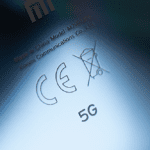 History
History  History
History  Weird Stuff
Weird Stuff 10 Superstitious Beliefs That Once Consumed Entire Cultures
 History
History 10 Bizarre Friendly Fire Incidents in Military History
 Technology
Technology 10 Modern Technologies That Accidentally Imitate Ancient Magic
 Mysteries
Mysteries 10 Mysteries of the Human Genome
 Weird Stuff
Weird Stuff 10 Things So Rare They’ve Only Been Found Once
 History
History 10 Legends Whose Last Moments Undid Their Glory
 Health
Health 10 Futuristic Ideas to Treat Common Medical Problems
 Weird Stuff
Weird Stuff Ten Surreal Attempts to Reverse Baldness
 Facts
Facts 10 U.S. Government Contingency Plans for the Unthinkable
 History
History 10 Odd Things Colonial Americans Kept at Home
 Weird Stuff
Weird Stuff 10 Superstitious Beliefs That Once Consumed Entire Cultures
 History
History 10 Bizarre Friendly Fire Incidents in Military History
Who's Behind Listverse?

Jamie Frater
Head Editor
Jamie founded Listverse due to an insatiable desire to share fascinating, obscure, and bizarre facts. He has been a guest speaker on numerous national radio and television stations and is a five time published author.
More About Us Technology
Technology 10 Modern Technologies That Accidentally Imitate Ancient Magic
 Mysteries
Mysteries 10 Mysteries of the Human Genome
 Weird Stuff
Weird Stuff 10 Things So Rare They’ve Only Been Found Once
 History
History 10 Legends Whose Last Moments Undid Their Glory
 Health
Health 10 Futuristic Ideas to Treat Common Medical Problems
 Weird Stuff
Weird Stuff Ten Surreal Attempts to Reverse Baldness
 Facts
Facts 10 U.S. Government Contingency Plans for the Unthinkable
Top 10 Primitive Technologies Better Than Their Advanced Counterparts
New and advanced devices are always coming up in a technologically dynamic world. Ultimately, this renders older ones obsolete. You might agree that technological advancements happen fast—computers and mobile phones are excellent examples. But the irony is, while technology keeps advancing in leaps and bounds, some primitive methods and devices have managed to stand out, some even better than their ultra-modern advanced counterparts.
Let’s take a look at the 10 best primitive technologies that are better than their advanced counterparts. We just have to warm up our time machine.
10 The Wired Telephone
Alexander Graham Bell invented the wired telephone in 1844. Alexander’s telephone was undoubtedly a magnificent invention of the 19th century and still stands out for its peculiar features, most notably its rotary dial. With this dial, a user has to turn the dial for every digit of the phone number they want to call. Despite many writing off wired landlines as a thing of the past, the phone is remarkably better than its advanced counterpart, considering durability and other features. It’s not as “private” as the modern smartphone, but while “public,” it was way more affordable.
After over a century of use, modern phones—which we effortlessly carry around today—replaced the pioneer telephone. Although we can easily buy and replace a modern phone, between the 19th and 20th centuries, the wired telephone stood out as the best way people could communicate; and you definitely didn’t have to worry about cracked screens or people bothering you all the time!
9 The Swamp Cooler
The swamp cooler, also known as an evaporative cooler, cools the air by evaporating water. It’s one of the earliest “primitive technologies,” invented before the modern air conditioner. The swamp cooler is different from air conditioning systems that use cycles of absorption refrigeration (or vapor-compression). It also tends to absorb a lot of heat for evaporation. They also offer similar services to evaporative cooling systems without using complex equipment or ductwork.
Swamp coolers minimize dry air temperature by the phase transition of water-to-water vapor. This means the swamp cooler can cool air with less energy than refrigeration, especially in arid climates. In non-arid climates, the swamp cooler can condition the air without adding to the humidity (this favors the occupants).
8 Beepers and Pagers
Have you ever heard of pagers? Well, if you haven’t, buckle up. Also called beepers, pagers made their debut in the 1950s, but it wasn’t until the 1980s that they gained traction and popularity. It’s a one-way communication device that you can use for emergencies. For example, it’s an excellent device for doctors and security personnel who must be reachable at all times.
Pagers have contributed to improved technology; a striking case in point is the smartphone’s invention. Of course, it’s the need for better communication devices that prompted such innovations. Despite this, the smartphone’s arrival (at the beginning of the millennium) made beepers and pagers decline drastically. However, pagers are durable, resilient, serve a singular purpose, and offer better coverage. Unsurprisingly, they’ll remain relevant for years.
7 Telegram
Today we have the internet, but years ago, people had telegrams. And we’re not talking about the Telegram app you can find in the Google Play Store. No, this was different—it was more like physical mail with detailed information from the sender transmitted by Morse Code. And the message could be about anything. Why, your aunt or uncle could send you a telegram about their ongoing projects and pet crocodile—if they had one.
The telegram offered more fun than our 21st-century email. Watch an old film, and you’ll quickly realize how the telegram had a mysterious beauty that Microsoft Outlook’s clumsiness couldn’t seem to muster. The telegram certainly had a sense of elegance and drama to it. The telegram messenger approaches your door, knocks, you open it, and they say, “Telegram!” Talk about nostalgia.
What’s more, modern email, in comparison, excludes all the anticipation that the telegram brought to senders and receivers. It also takes less skill to send an email than a telegram. The telegram will surely remain one of the best primitive technologies ever invented. Although we have a billion people using the internet, you simply can’t compare it to the telegram.
6 Dumb Phones
Dumb phones existed way before smartphones came into the picture. With growing technology and advancement in mobile software, such as Android and iOS, they are quickly becoming a thing of the past. In fact, it’s almost unthinkable for anyone to use dumbphones. These phones are old-fashioned; obsolete.
Dumb phones are basic cell phones. You could make phone calls, send texts, and if you were lucky enough, you could find one with a cheeky game of “Snake” to play when you were bored at home or at work. They are the precursor of modern mobile phones and were beneficial during their time. They significantly improved communication during the late 20th century, and they could run for days without needing a charge.
Our smartphones’ batteries are a joke compared to a dumb phone battery. And so are smartphones’ durability. Dumb phones are known to withstand a good drop or two, but there are never any guarantees that your smartphone will survive a fall, even from 6 inches high. Without a doubt, dumb phones have proved that some primitive technologies are even better than their advanced counterparts.
If you want to buy a dumb phone to experience how good they are, do a little research online. Companies still sell them—you can get a throwback Nokia. Unfortunately, it’s hard to adapt them to the current growth of technology. But hey, it wouldn’t be such a bad idea to keep one in your collection, right?
5 Typewriters
If you are a writing nerd or enthusiast, you probably know about typewriters and what they do—or used to do—way back before the invention of computers. You can use a typewriter to type up anything, from novels, essays, or propaganda handouts. The inventors produced the first typewriter back in 1575 and were, essentially, a step up from the traditional pen and paper. They opened up enormous possibilities for writers. But the advent of computers made them obsolete.
A unique factor about the typewriter is that it doesn’t come with distractions the way a computer does. Having your laptop logged on to the internet while still working on your novel can pose a challenge. Why? You can be distracted by the latest trending news, log on to social media—do everything but work on your novel. With typewriters, you can focus on whatever you’re working on and produce excellent work, along with that satisfying sound of the keys hitting the page.
4 Digital Audio Tape (DAT)
Remember when Sony’s digital audio tape (DAT) hit the market? It was the real deal. The DAT came with a digital audio recording similar to a cassette but in a smaller format. The great thing about the DAT was that it could record better than a CD. It could also assign a number to the tracks and easily skip whatever you wanted it to, just like a CD. The only disadvantage with the digital audio tape was its prohibitive costs, making it most helpful (exclusively) to the professional markets.
Interestingly, the digital audio tape was also used in the professional market as a data storage medium. Since 1987, it has recorded some 660,000 sales. In 2005, Sony announced plans to stop producing the machines. The announcement was earth-shaking.
The invention of hard disk drives and memory cards (which superseded the machines) came with incredible portability and efficiency. This quickly made DATs redundant. However, some people still use digital audio tapes due to their ease-of-use and reliability. DAT is also durable and can last for years, unlike memory cards and hard disk drives.
3 Video Home System (VHS)
The video home system (VHS) is another primitive technology that stands tall compared to its advanced counterparts. VHS are small reels of magnetic tapes wrapped in a plastic housing. It became popular back in the ’80s, and many used it to record videos or watch the latest movies. The VHS had a significant disadvantage that many who grew up with them remember quite well: you had to rewind it.
Then came the DVD. Many considered DVDs to be much more efficient and convenient than VHS. This caused households to switch from VHS players to DVD players. By 2008, DVDs had almost wholly replaced VHSs. This massive shift eventually led to the demise of VHS. However, many still respect it as one of the best ways to watch and record films. In its heyday, VHS was simply the best!
2 Personal Digital Assistant (PDA)
Many analysts recognize the personal digital assistant as the forefather of the modern mobile phone. A personal digital assistant is a small, handheld device that offers computing, information, and data storage. You can use a personal digital assistant to schedule important events or activities and keep address information. It also comes with a retrieval functionality for users. It offered similar access to many things that we enjoy today, including the internet, touchscreen functionality, and word processing.
PDAs became popular in the early ’90s and 2000s, but smartphones later replaced them. Some PDAs featured small physical keyboards; others had an electronically-sensitive pad and stylus for handwriting. The term personal digital assistant was later recycled in 2010 to refer to software that recognizes a user’s voice and responds to queries through artificial intelligence.
Today, you rarely see someone using a PDA, but they’re still useful.
1 Floppy Disks
Floppy disks came around in the 1970s and were primarily a data storage medium. The devices featured an 8-inch floppy disc and stored 80 kilobytes of data. With time, floppy disks got smaller, and their storage capacity grew larger. By the mid-’80s, there was a 3.5-inch floppy disk that could store 1.44 MB of data. By 1990, there were software-size prompted floppy disks in many applications. One example is Adobe Photoshop that required many disks to run. However, floppy disks were vulnerable to heat and magnets. They were also easily corruptible, which made them unsuitable for use. CD ROMs soon became popular and took over.
Currently, floppy disks live as save icons for many software applications. Despite their benefits, floppy disks have mostly become obsolete.








